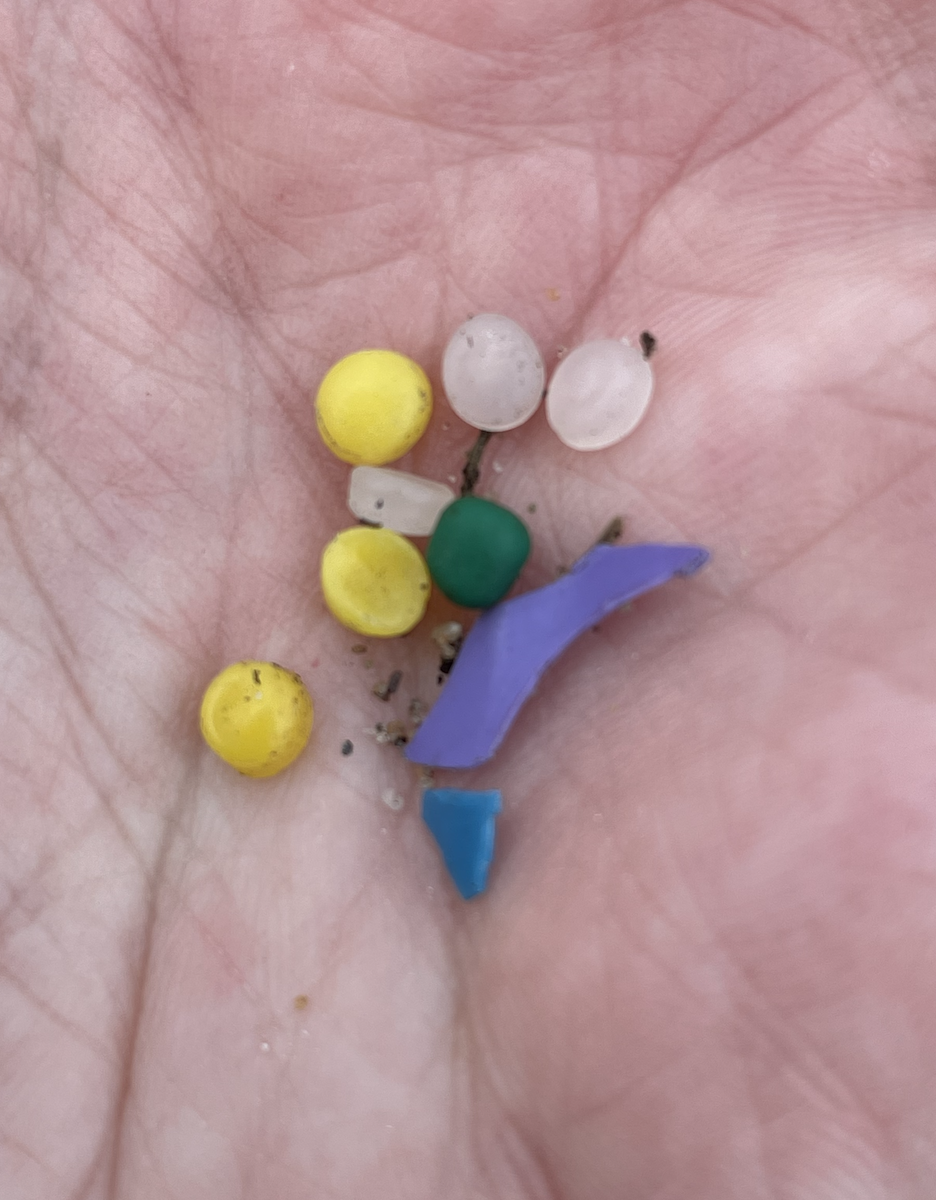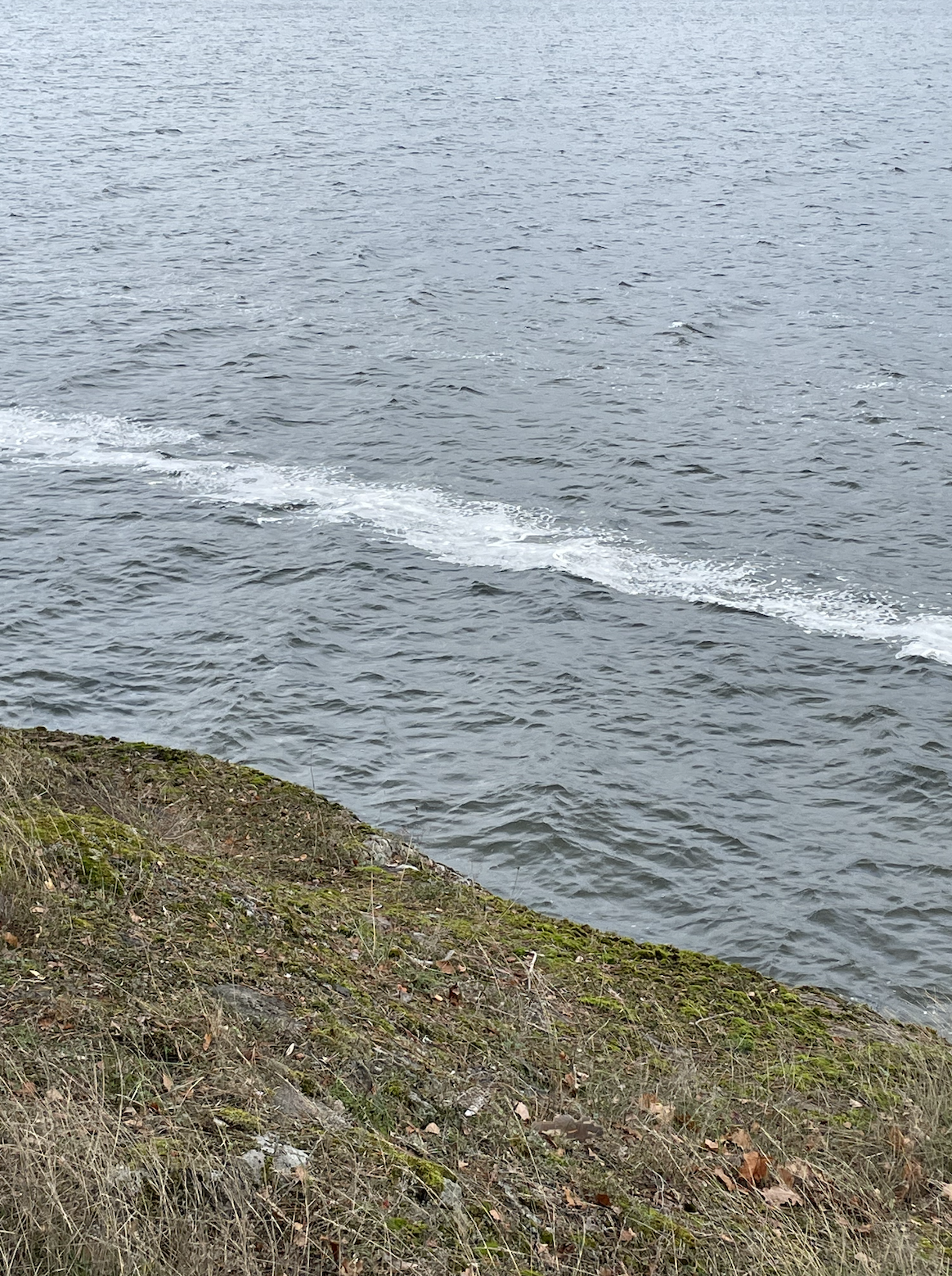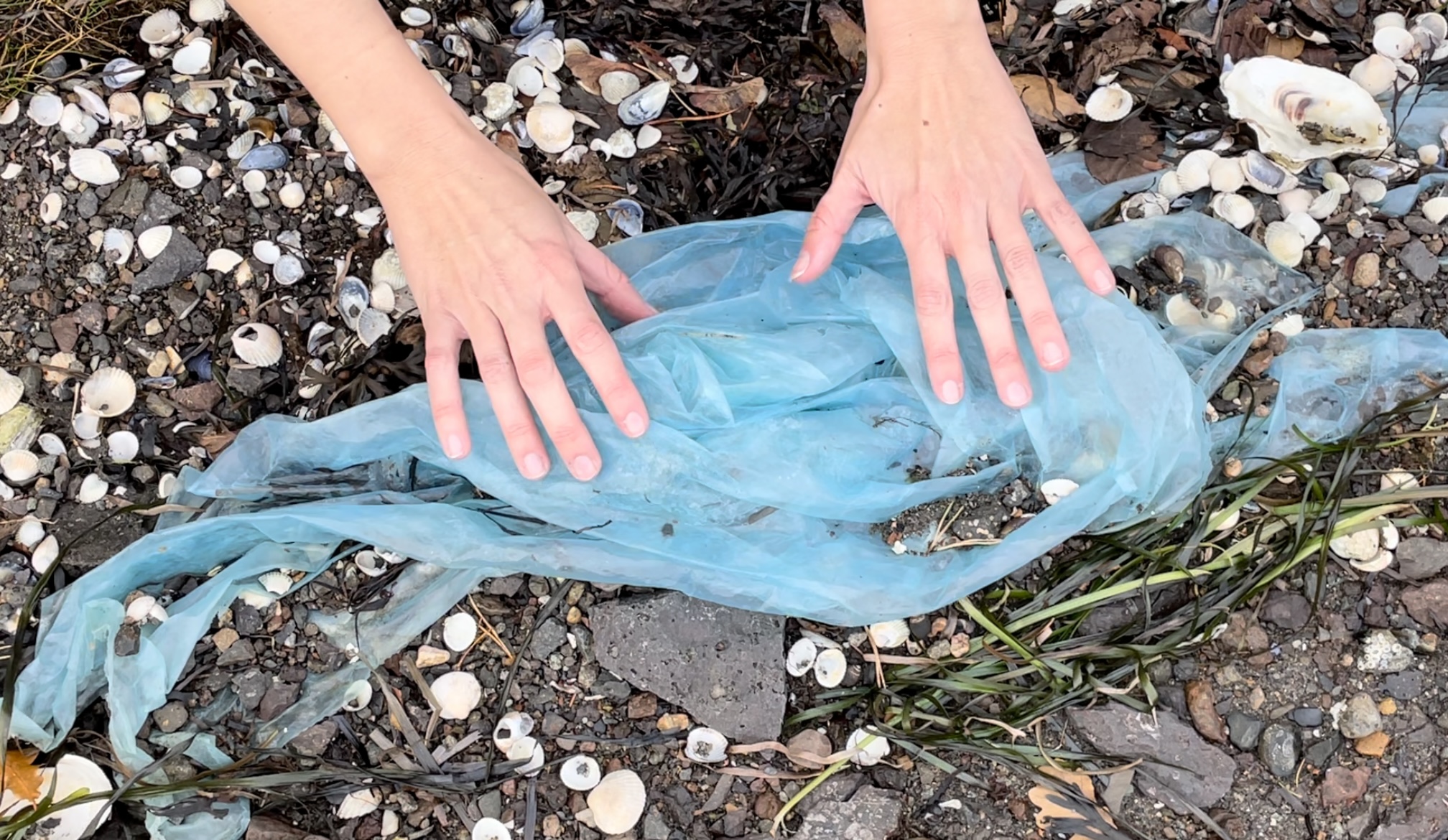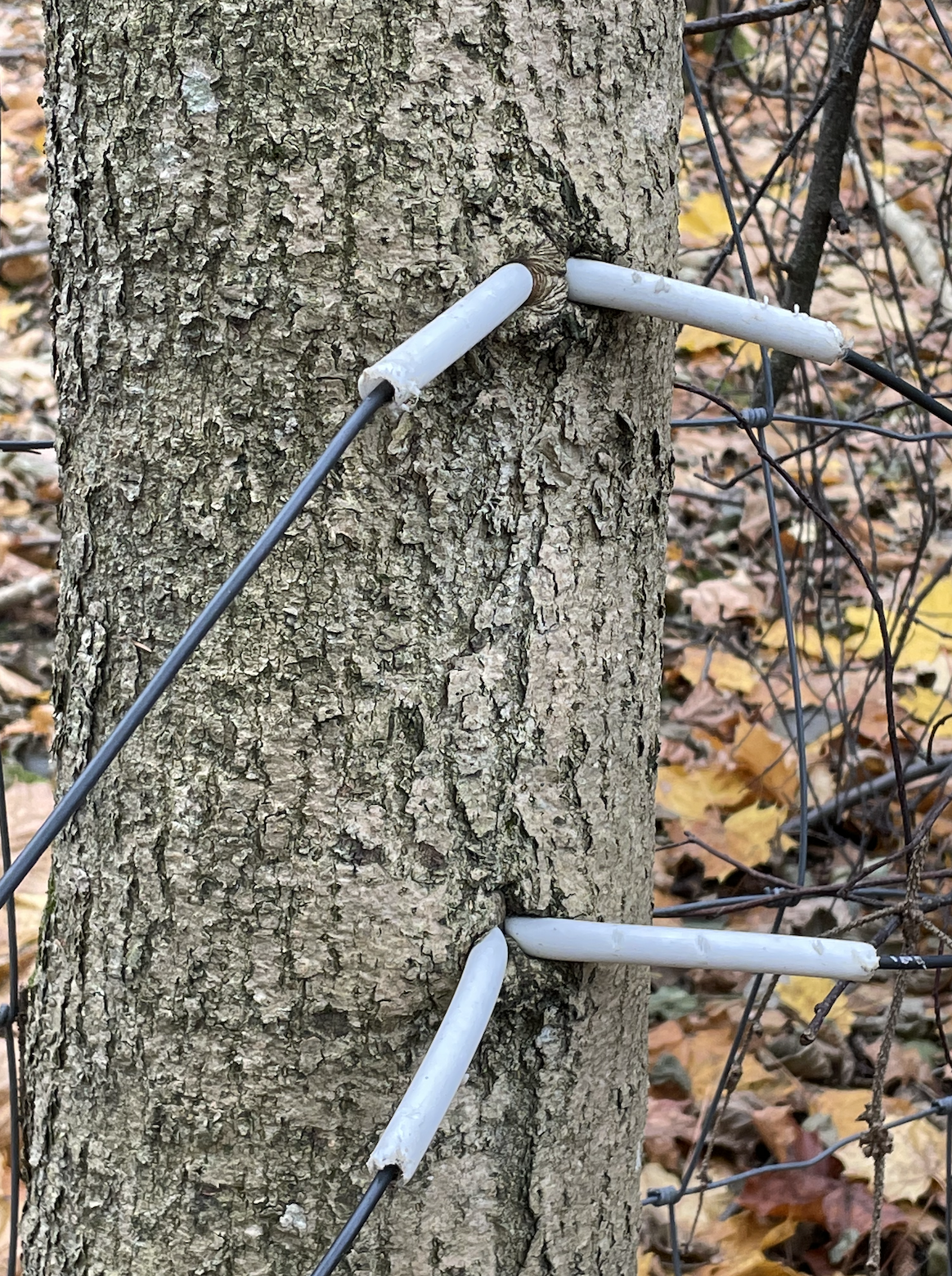Tending to Moss
NOV 2 2021: I meet Moss + tangent island Jeløy.
I start by first leaving the train station and begin what will be a 6 hour walk along the perimeter of the island—feeling its skin for scars. I approach the land with curiousity, and potentially love, really. By walking there is room for slowness and listening; something like finding your step as ears.
I immediately notice that there are signs directing you along what would be Moss’ trail system. It weaves you along the coast and inland. I proceed to take these signs as guidance—committed to what they know.
I begin to document where the beaches are with my phone—screen capturing my location—even though they may disappear in the next visit. It’s the first time where my footing is challenged and my boots are immediately soaked with muds. It’s no problem. I came prepared.
Days prior I began researching microplastics and binged on two documentaries explaining the phenomenon/stark reality of these things—toxic bodies that end up inside other bodies. A microplastic is a piece of plastic 0.5cm or less in size that are either manmade or form when plastics that get launched into the ocean combined with sun and current break down over time.
I tell my friends back home then and there that this month I will try to use no/low numbers of plastics in my day-to-day. My friend A tells me there are studies placing microplastics in new born children. They exist in the water we drink. They are pretty much everywhere. It’s terrifying. I immediately looked up bulk food stores in Oslo, and surprisingly there are very few. Two to be exact. This will not be easy, and it’s obviously more of a systemic problem, but my efforts are worth a shot.

As I keep walking I meet the first beach where I notice efforts of tending. There is a sweep and a wheel barrow and a bucket that says “GLASS”—assuming this is a space for beach glass to be removed from the sands and collected. I bend down to see what I can find with just my eyes and my hands. Instantly I see little beeds brought to the surface from recent tides. Nurdles: yellow, green, and translucent white. These are small resin plastics used for packaging and they are everywhere in this ocean, and now coastal.
I begin to collect using my limbs as sieve; storing them in my pocket as a temporary bin.
I know that my body won’t sift enough. I will need support from a tool or other(s).

I keep walking along the eastern coast north towards the beak of the island. I am met with nature trails, and enjoy connecting with this place. There is one person who passes me with a fishing rod and a quote “it’s a beautiful day” in English. I can only fester the words “I know”. Now instead of written signs, the trees are marked with a vibrant light blue marking. This marking keeps you on path.

Perimeters exist over and over. Colours are soft and muted and my eyes welcome this excepting the vibrant blues only.
Next I see the reciprocal blue, but this time resting.


A sculpture folded into the land was finally released and I carried it on my way continuing north to the beak. It got to a point where the Earth began to swallow me, and everything around it. My boots dropping deeper into the ground—trees chewing on the unnatural. I meet a fence holding ‘private’ land and at this point I know it’s time to turn back, and cross the island to her western coast.


I manage to walk west enough I hit a fruit tree orchard and next a road. The road eventually meets a trail system that pulls me west to the other shore. This whole time holding the blue piece of plastic looking to find it a better place for it to land. It’s rolled up like some baked good pruning my fingers. At one point I realize I could just put it in my bag, but for some odd reason feel the need to hold it with my own hands.

Finally I kiss the western shore. It has a different energy completely—houses are very quiet and the wind is muted.
Approaching this long concrete dock, now empty, I see someone sitting surrounding by several white buckets. They look busy and concerned with their practice. Getting closer I realize there is a person sifting the sands. I speak with them, and maybe ask too many questions—I can feel them wanting space or maybe just the hush they were in before.
They are here sifting through the clay to collect worms to research ‘risk’ and contaminants in the water. They work for NIVA (Norwegian Institute for Water Research). They mention they are from Brazil and I awkwardly mention my peer is half Brazilian—looking for connection still as I move through this foreign place new + lonely here. Solitude is impossible in nature and that is comforting.

Before this walk, in my research I found a poetic tool that a conservationist Marc W. Ward has constructed for specifically clearing beaches of microplastics. It consists of two metal poles and polymer screen that drapes between them. It takes two people to manually operate with their arms alternating an up-and-down action. This action sifts the sands, and creates a small level of static collecting the really, really small microplastics from the sand.
I told him my interest and intensions, and he offered to ship it to me here, or via Canada, and offered to consult me through this process—asking for the beaches I will tend to.
At first this project with Galleri F15 felt forced and I couldn’t place why. Coming up with ideas for a place I don’t know, at all, but in this moment on this walk I remembered that I must be responsible to the place that hosts me—and this became incredibly clear how that relates to my own artistic practice. Now I know that this project will be the beginning of a relationship; tending to Moss by spending time with her skin.
Sifting as listening.
